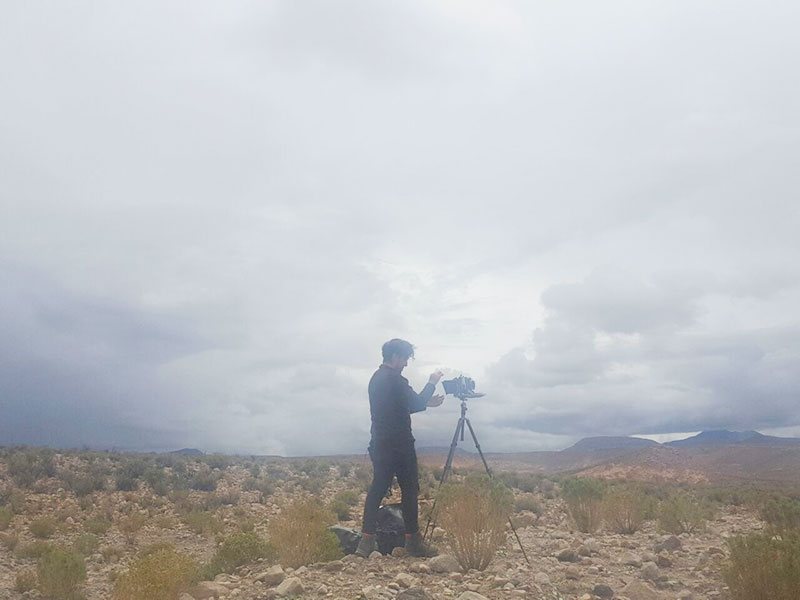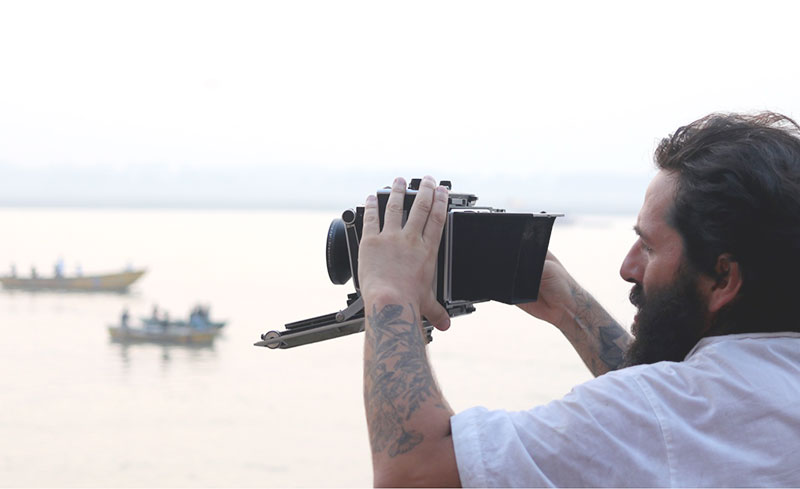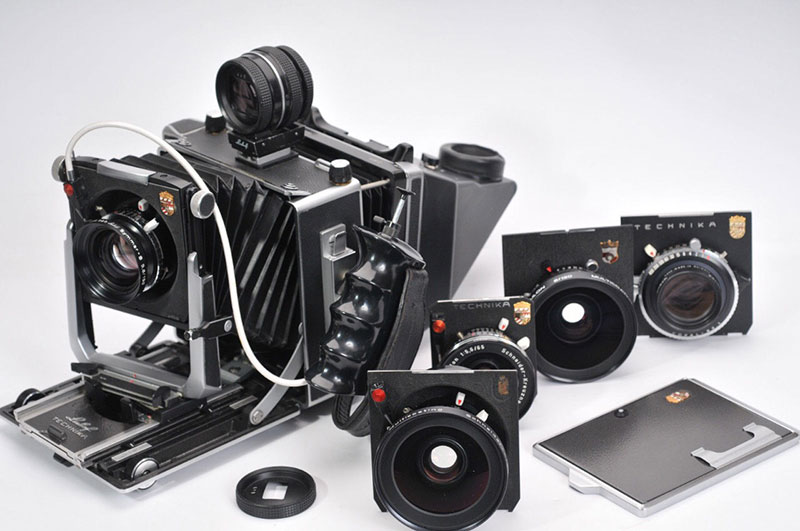MAREA will use a 4x5 Large Format camera with color negatives. This camera, due to its characteristics and operation process, forces one to connect and understand a place through observation before producing a single image.
MAREA is a relational and situational project, in which the process is characterised by a dialogue with the landscape, geography and territory, a methodology that will be part of each stage of the project. However, it is during the trip and the production of the photographic record that this relational and situational coupling becomes important within the creative process of experimentation and theoretical and practical conceptualization. The use of a 4x5 Large Format camera is a key and transforming element in relation to the landscape, geography and territory. How the research is going to be affected by the process of using the camera and vice versa is one of the main interests in the process. This camera only allows you to take a single photograph in approximately 5 minutes, forcing you to connect and understand a place through acute observation before producing a single image. It is a meditative work that requires absolute concentration, persistence and patience. It is a moment when there is nothing else than the flow between what is being observed and what we are attracted to, the punctum of which Roland Barthes speaks of in "a Chambre Claire : Note sur la photographie". However, what to look for, or where to find “the punctum”will be part of the dialogue between the researcher and the photographer, it is the artistic research itself, a collaborative work process between what we might see and what we might know.

©: Francisco Tacusi
Bruno Giliberto’s working method in recent years, and which will be carried out once again in MAREA, is as follows, as he explain: “I take long walks carrying my backpack while I seek and find what I’m interested in capturing, entering a meditative state of observation of reality as it is. I cease to focus on what I would like to find and I start to see what is in front of me. Once I am faced with a scene that grabs my attention, I stop to observe what happens without modifying or altering the mood of things. After a few minutes I leave and open my backpack on the floor. I open and place the tripod, mount the camera and fix its back depending on whether the scene is horizontal or vertical. I level the camera position with the bubble level. I select a lens and mount it on the camera. I compose through the ground glass. If there is excessive light, I cover myself with a dark cloth. I correct the camera level and fix the position of the tripod. I adjust the focus with a magnifying glass. I measure the light, install the cable release, adjust the aperture on the lens and the shutter speed according to the light needed for the shot. I close the lens. I load the trigger. I mount the film holder. I remove the protective guillotine from the film holder. I hold the trigger release. I wait a few seconds and I take a shot. I flip the guillotine over and reinsert it into the film holder. I take the film holder out of the camera and put it back in my backpack in a black bag to protect it from the light. I take my notebook and take a few notes of the image I just made. I write down date and time, lens, aperture and shutter speed”. This process will be repeated for each photograph that will be exhibited at the final three exhibitions. It constitutes the minimum procedure to be able to produce a single photograph, taking approximately 8 minutes from when he puts his backpack on the floor until the picture is taken. Then Bruno puts everything back in its place, puts his backpack on and walks in silence once more.
MAREA has this cyclical time, the coming and going of water: walking again in order to stop once more.
6o boxes of 4x5 format and 10 boxes of 120 format Kodak Portra 160 will be on the project. The film will be developed and digitised in high resolution at Fotopioniere in Berlin. The quick scans will be done at Bruno Giliberto’s studio in Berlin.

©: Rajkumar Singh
Equipment:
cámara
- Linhof Master Technika Classic
negativos
- 200 Kodak Portra 160, 4x5’ format
- 100 rolls Kodak Portra 160, 120 format
lentes
- Sinar Sinaron W 105º 1:4,5 f=75mm MC, Linhof plate
- Schneider-Kreuznach Super-Angulon 5,6/90 Multicoating, Linhof plate
- Schneider-Kreuznach Symmar-S 5,6/150 Multicoating, Linhof plate
- Schneider-Kreuznach Apo-Symmar 5,6/240 Multicoating, Linhof plate
120 format adapters
- Linhof Super Rollex 6x9
- Shen-Hao back 6x17
tripod
- Gitzo Traveler GK 1555T-82TQD
lightmeter
- Sekonic Digi Lite L-318B
accessories
- Bubble level 3 axis,
- Focusing loupe 8x,
- Dark cloths,
- 5 film holders Lisco Regal II,
- Darkroom cloth,
- Little note book,
- Pencil.
- Black Gaffer
total weight app.
-18 kg.

